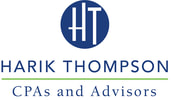|
An employer-sponsored retirement plan can be a great way for employers to show workers they care about employees' long-term financial prospects while giving workers a way to save on their taxes. A simplified employee pension (SEP) plan lets business owners and self-employed individuals use a simple way to make contributions for retirement savings. SEP-IRAs come with streamlined rules that make them less onerous to set up and administer than are 401(k) plans and more complex choices.
Let's see how they work:
In many ways, SEP-IRAs work just like a traditional IRA:
SEP-IRAs make it easier to help employees save for retirement. They have far fewer requirements than alternative pension arrangements. It could be a good move for your small business, even if you are the only employee. However, the choice of a retirement plan at your business is an important one. The tax and financial implications can be substantial, and there may be other restrictions and provisions. Also, your decision can have a substantial effect on employee satisfaction. Consult with professionals to make sure you establish the right plan for your business. Comments are closed.
|
Newsletter articles are posted every 2 weeks. If you would like to have our e-newsletter delivered directly to your inbox, please sign up. Your information is confidential; you can unsubscribe at any time. Subscribe. Categories
All
|
Proudly powered by Weebly

 RSS Feed
RSS Feed